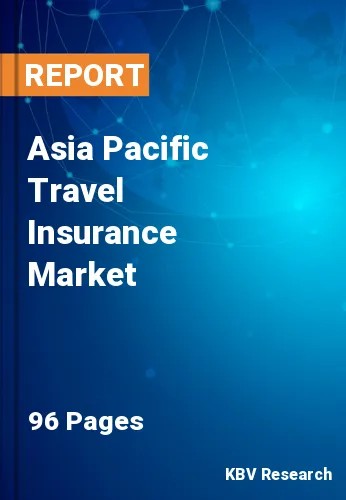The Asia Pacific Travel Insurance Market would witness market growth of 28.8% CAGR during the forecast period (2021-2027).
For the time being, and while hoping for a more worldwide opening of borders, tourists' preferred destinations are still those of neighboring countries. Travelers choose airlines, governments, and even hotels that have been able to effectively explain their safety and health security measures. Dubai, for instance, has had a hotel occupancy rate almost too full after the borders were reopened. New spending patterns have arisen, and some industries, such as rental lodgings and motor RVs, have seen increased interest. It's as if people wanted to isolate themselves while on the road and build a "health-safety bubble" when away from home.
The concept of "workstation," a new style of working while traveling that has been aided by the advent of distance working, or "slow tourism," which is taking a longer trip rather than a series of short stays. These latest trends have numerous advantages: they limit mass consumption, raise regional exploration, and promote green tourism that is mindful of local climate, communities, and ecology.
Various emerging nations of the region are witnessing a high government spending on tourism initiatives, which is contributing to the growth of the regional market. Based on the circumstances with the coronavirus and the recovery of the travel industry, the government plans to establish measures for a full-fledged inbound recovery while encouraging travel demand. For example, Japan's Ministry of Internal Affairs and Communications set aside USD 36.35 million in its FY 2021-22 budget for Digital Transformation (DX) in local governments in July 2020. The goal is to boost the sustainability and productivity of regions, as well as develop a globally competitive tourism sector, by attracting visitors to Japan and promoting tourism through Digital Transformation. Because of the high population density and absence of universally acknowledged traffic restrictions, getting about in China can be challenging.
The China market dominated the Asia Pacific Travel Insurance Market by Country 2020, and would continue to be a dominant market till 2027; thereby, achieving a market value of $4,704.7 million by 2027. The Japan market is anticipated to grow at a CAGR of 28.1% during (2021 - 2027). Additionally, The India market would display a CAGR of 29.6% during (2021 - 2027).
Based on Coverage Type, the market is segmented into Annual Multi-Trip, and Single-Trip. Based on Distribution Channel, the market is segmented into Insurance Intermediaries, Insurance Companies, Banks, Insurance Brokers, and Insurance Aggregators. Based on End User, the market is segmented into Family Travelers, Business Travelers, Senior Citizens, Education Travelers, and Others. Based on countries, the market is segmented into China, Japan, India, South Korea, Singapore, Malaysia, and Rest of Asia Pacific.
Free Valuable Insights: The Worldwide Travel Insurance Market is Projected to reach USD 60.7 Billion by 2027, at a CAGR of 28.2%
The market research report covers the analysis of key stake holders of the market. Key companies profiled in the report include Seven Corners, Inc., USI Insurance Services, LLC, Assicurazioni Generali SpA, American International Group, Inc., Allianz Group, AXA SA, and Zurich Insurance Group Ltd.
By Coverage Type
By Distribution Channel
By End User
By Country
Our team of dedicated experts can provide you with attractive expansion opportunities for your business.

